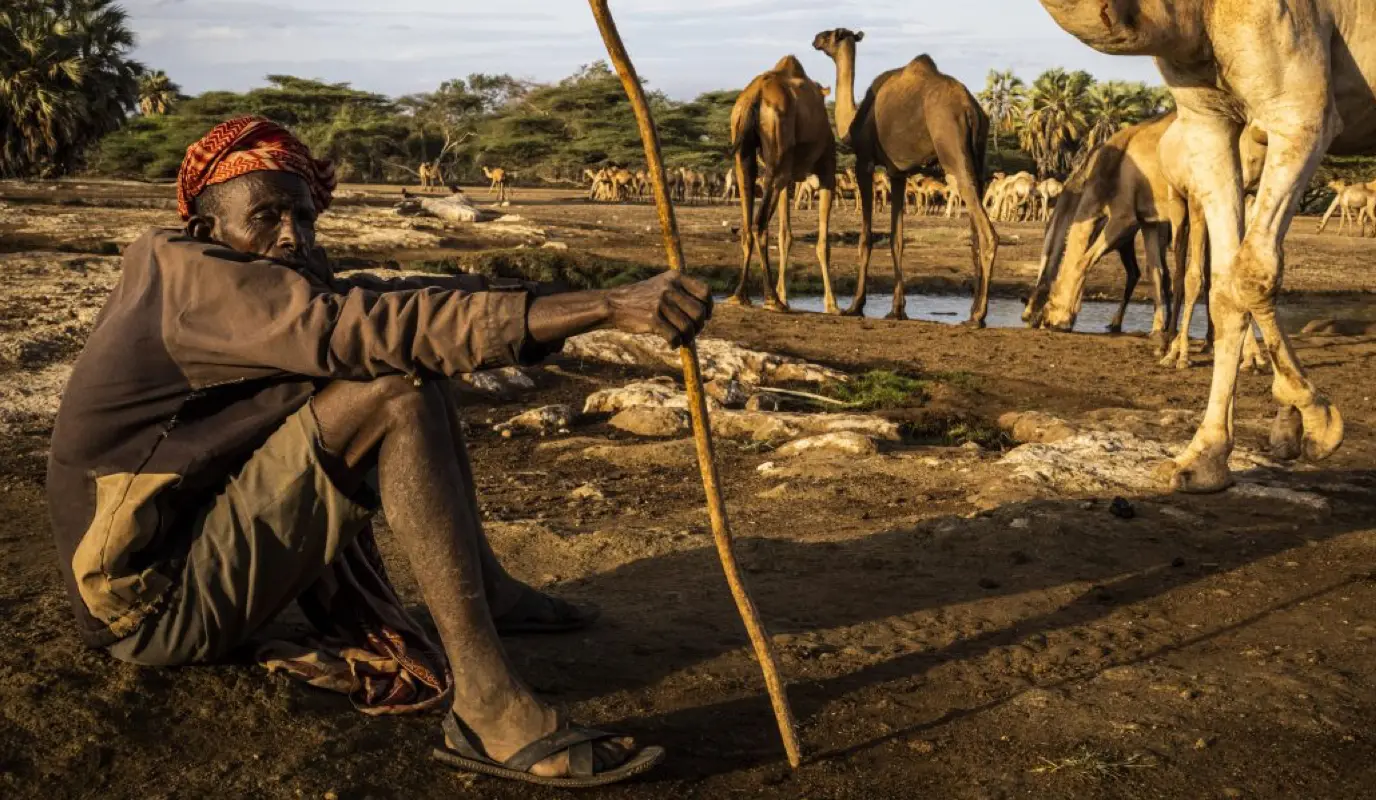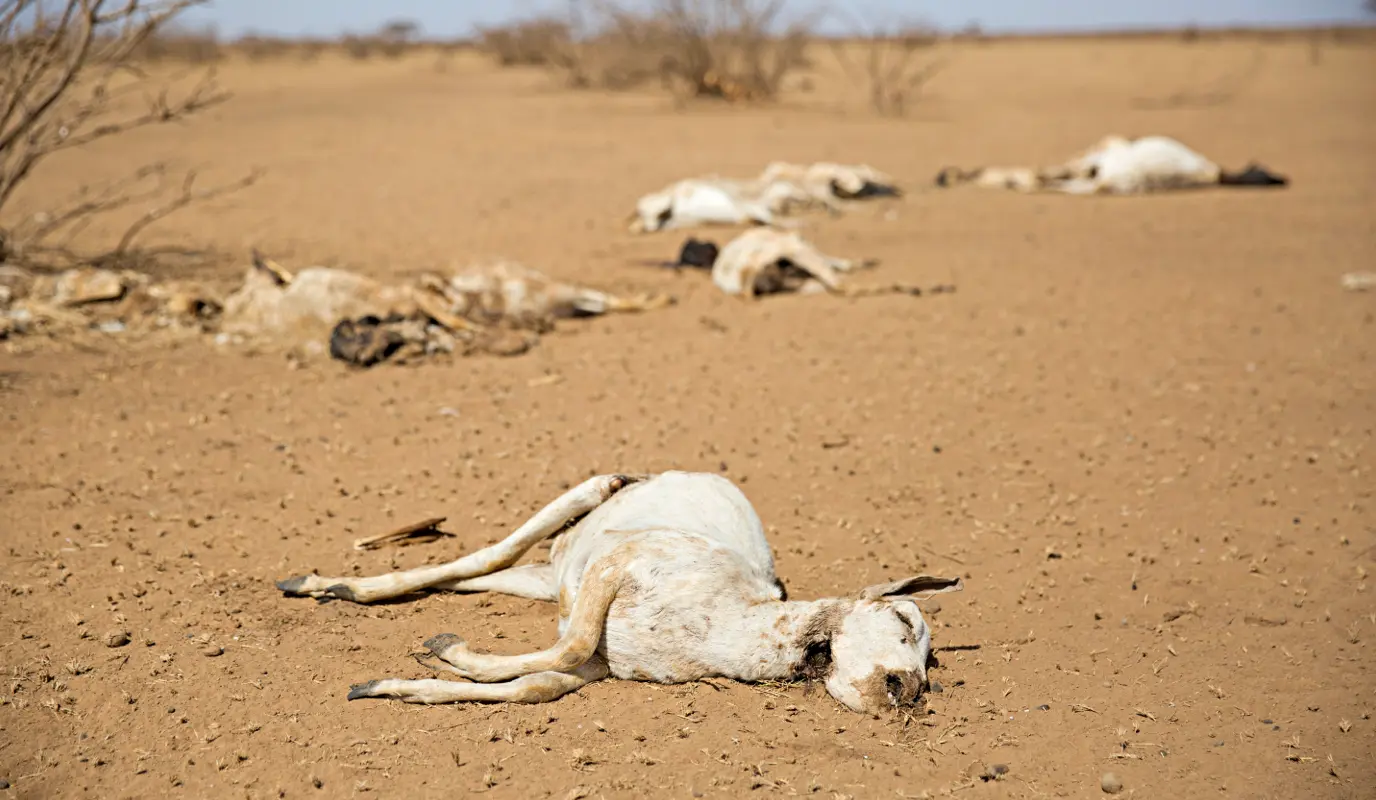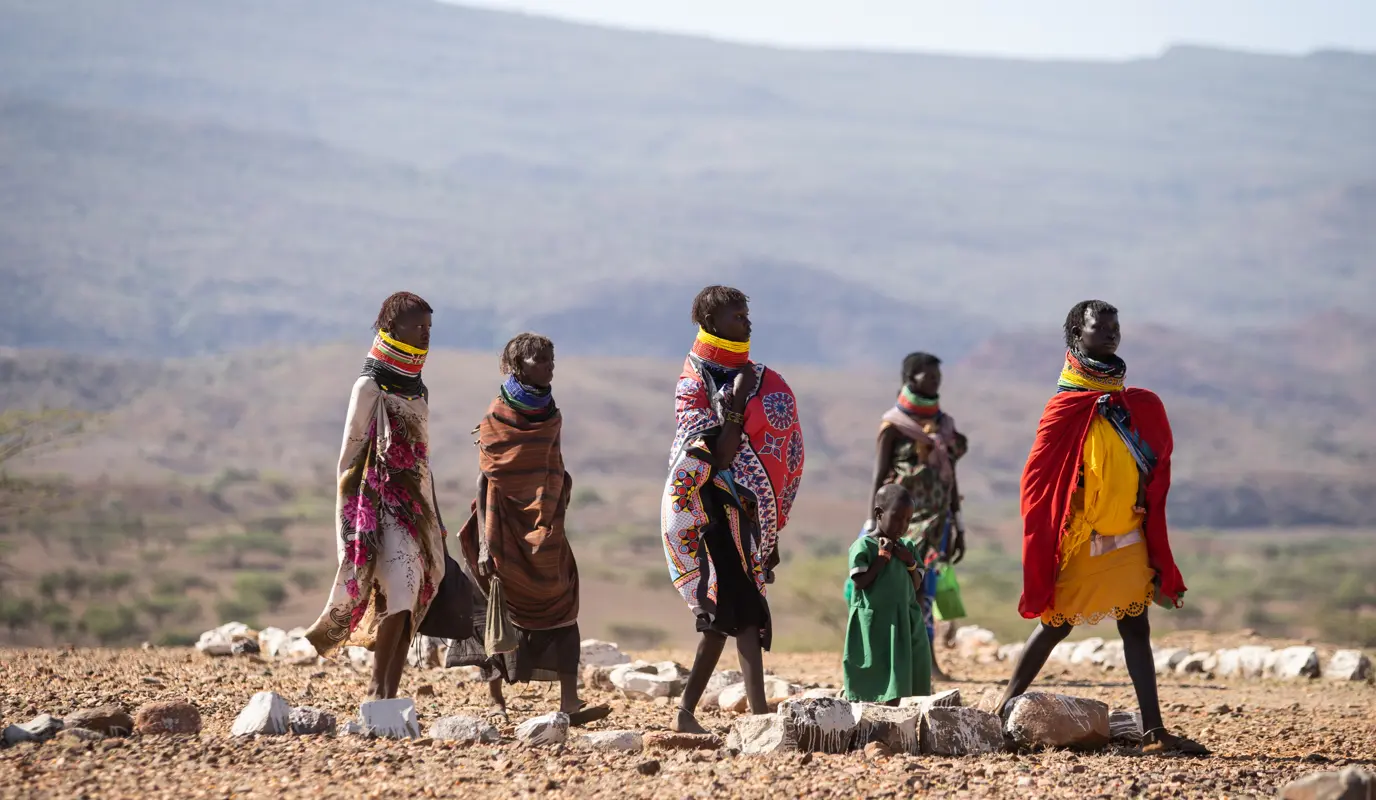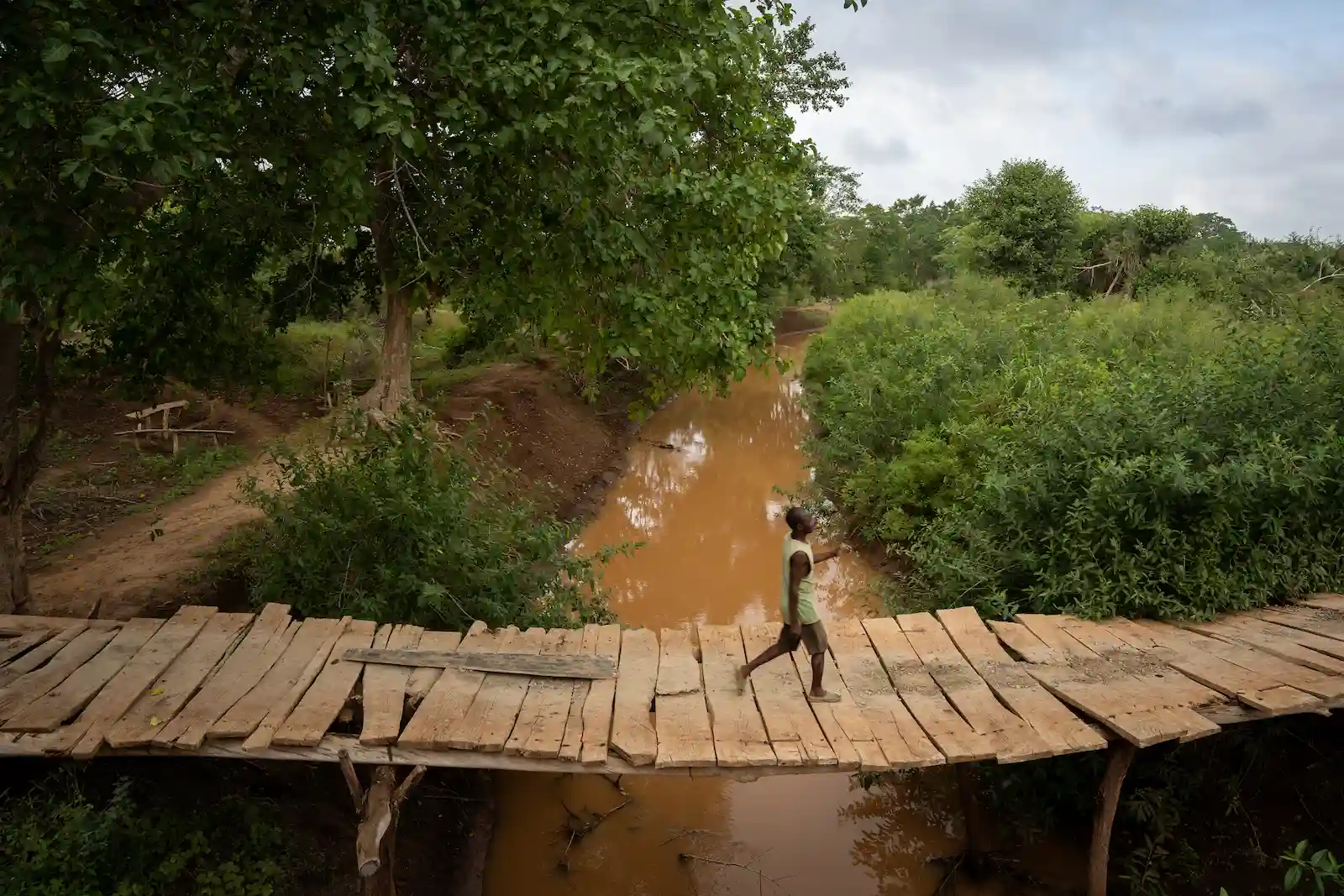1. This is the worst drought to hit the region in over 40 years
In the Horn of Africa, drought has increasingly become the rule rather than the exception: Somalia has faced more than a decade of drought. Ethiopia has faced back-to-back droughts over the last six years. Kenya has experienced a cycle of drought dating back to 1975. However, the region is now facing its worst drought since 1981, with four consecutive failed rainy seasons. These shortages have destroyed crops, caused widespread livestock deaths, and dried up water sources across the three countries — as well as in parts of Sudan and South Sudan.
For context, a 2011 drought that hit the region left 13 million people in need of humanitarian assistance. In Somalia, a famine that resulted from the drought killed over 260,000 people — half of them were children under the age of 5. Even if Somalia does not declare famine this time, UNOCHA writes that, “given the large number of people affected and the likely duration of the crisis, excess mortality during this drought could be as high as in 2011.”

2. The next rainy season in the Horn of Africa begins in October, but the outlook is not promising
Early forecasts all indicate the likelihood that the “short rains” season from October to December will also fail (the “long rains” season here takes place between March and May). If this happens, it would lead to a truly unprecedented situation not seen in recent history.
In July of 2022, Amina Abdulla, Concern’s Regional Director for the Horn of Africa, estimated that by September, we could be looking at 20 million people in need of humanitarian aid. Sadly, these numbers have been exceeded. As of December 9, 2022, an estimated 36.4 million require humanitarian assistance. Failed rains at the end of 2022 will lead to further suffering. So far, approximately 5.1 million children have been left malnourished due to the drought.
“We need to scale up to prevent the situation from deteriorating further,” Abdulla said earlier this year in a speech to the United Nations Security Council, “or else we will surely not be able to cope with the numbers who will need assistance in the coming months.”
3. People in the Horn of Africa rely on the land to live
Approximately 80% of Kenya is arid or semi-arid land, leaving most of the people who live in this region relying on pastoralism (herding livestock) for their livelihoods. Currently, 4.5 million Kenyans across 23 of these arid and semi-arid regions require humanitarian assistance. Herders have suffered significant losses and are facing challenges to their very way of life: 2.5 million livestock in Kenya have died as a result of the drought. Over 90% of open water sources in the region have dried up; those remaining are expected to last just one to two months. Because of these shortages, pastoralists are traveling longer and longer distances for food and sustenance, although this has had a negative impact as well, with both humans and animals at risk for health issues, injury, attacks from predators, and death from hunger and thirst. Authorities in Kenya have declared a drought emergency.
In Somalia, 75% of residents live in rural areas, with 60% relying on herding and 15% on agriculture for a living. There, over 3 million livestock have died due to the conditions. As of December 9, 7.8 million Somalis require humanitarian assistance.
In Ethiopia, where 24.1 million require humanitarian aid, over 4 million livestock have died. “It’s very worrying when even camels, known for their ability to survive in extremely hot and dry conditions, are struggling to survive,” says Concern Kenya Country Director Arshad Muhammad. “Over 8 million people rely on livestock for their livelihoods,” added Concern Ethiopia Country Director Barbara White in July of 2022. “But two million animals have perished and another 22 million are at risk of dying. They are weak and producing little milk, the main source of nutrition for children.” According to the FAO, 1.6 million children under age 5 across the region are missing out on their daily milk (and the essential vitamins that come with it) due to these livestock losses.

4. What began as a failed rainy season created a domino effect — with deadly consequences
The loss of crops and livestock isn’t the end of the story, however. The effects of this drought are being felt in rising hunger and malnutrition rates, as well as incidences of GBV and threats to education. Many communities across Ethiopia, Kenya, and Somalia are facing hunger and food insecurity on unprecedented levels. The Horn of Africa drought compounds a cycle of crisis in Somalia, leaving 6.7 million people acutely food-insecure. Eight different areas of the country are at risk for famine between now and September. In Ethiopia, which has faced its own complex humanitarian situation, 11.9 million people go to bed hungry (an increase of 2 million since September). In Kenya, 4.35 million people face similar conditions of food insecurity. “Where drought leads, hunger is never far behind,” says Concern Somalia Country Director Abdi Rashid Haji-Nur.
Hunger in the Horn of Africa is furthered by inflation, with food prices at a premium in many of the areas affected by drought. This is in part due to the low supply and high demand of a compromised food system, but it’s also the result of a larger hunger crisis prompted by the war in Ukraine, a region that supplies much of the wheat imported by Somalia, Sudan, and South Sudan. The cost of a food basket in Ethiopia has risen by 66%, and in Somalia it’s gone up by 36%. For families already living in the cycle of poverty, this means many are having to make very tough decisions between selling off whatever assets they have — or going without food. For internally displaced communities or refugees living in host communities (especially in Ethiopia and Sudan), getting food and other life-saving items is even more of a challenge as rations have become more expensive to acquire and humanitarian organizations in the area are under-funded.
“Where drought leads, hunger is never far behind.” — Abdi Rashid Haji-Nur, Concern Somalia Country Director
Women and girls are hit especially hard by drought as well. As they are often the ones responsible for gathering water, many now have to travel even further to find a water source, wasting precious time and opening themselves up to violence and injury. The UN Office for the Coordination of Humanitarian Affairs adds that the risk of gender-based violence has increased due to the deteriorating conditions. In Somalia, child marriage rates have increased as families struggle to keep everyone fed, and 4.3 million children are at risk for dropping out of school. Families struggling to keep all of their children in school are prioritizing the education of their sons over their daughters.
5. The cause of this drought isn’t only climate change — but the climate crisis isn't helping
Droughts in east Africa are common in part due to La Niña conditions, which are the counterpart to El Niño. Both of these phenomena are normal and not the result of climate change. However, the climate crisis has increased the frequency and severity of droughts brought on by these natural occurrences, due to the warming of the Pacific Ocean where both winds originate. Before 1999, droughts happened roughly every five years. Their rate has more than doubled since then, which scientists have linked to global warming.
6. This isn’t the only problem that people in the Horn of Africa are facing
As we mentioned above, other forms of crisis are felt in each of the countries that form the Horn of Africa. Somalia has faced an ongoing humanitarian crisis and conflict for the last 40 years. This makes humanitarian assistance already difficult to manage in the country. As Concern Somalia’s Haji-Nur, explains: “Operationally, it is difficult for national and international humanitarian agencies to deliver services to people in the different parts of the country. As long as there is absence of efforts to contain and to deescalate those tensions and conflicts, we will be having challenges in terms of having access.”
Communities facing droughts in the region have also faced the effects of flooding (which affected the area in 2019), a desert locust crisis, and both the COVID-19 pandemic and related lockdowns and border closures.

7. We’ve prevented disaster here before, but time is running out
In 2017, Somalia was at risk of another famine. However, a series of early warning and early action responses helped to avert this crisis. When the region’s long rains failed in the spring of 2021, agencies — including Concern — took action. However, the international community did not respond in kind.
“Sadly, we have now reached a point where what will shock us or get our attention are images of emaciated babies and animal carcasses,” says Abdulla. “And that — I am sorry to say — is utterly repugnant.”
“We focus on building people’s ability to cope with emergencies, but this situation is now beyond that,” adds White of the situation in Ethiopia. “With rains expected to be below average in the coming season, it is a race against time to save people by providing basic food, water, and medical care.”
“Sadly, we have now reached a point where what will shock us or get our attention are images of emaciated babies and animal carcasses. And that — I am sorry to say — is utterly repugnant.” — Amina Abdulla, Regional Director for the Horn of Africa, Concern Worldwide
The UN estimates that it will cost $3.7 billion to provide just the necessary humanitarian support in the region. However, donors’ international response to appeals has fallen far short of targets: Over the summer, appeal for Somalia was just 27% funded, with the same response rate for South Sudan. Just 34% of the necessary funding was pledged for Kenya, while no fresh funding was pledged for Ethiopia. Since then, commitments have increased and the regional appeal is just over 62% funded, but that delay has already come at a high cost.

The Horn of Africa crisis: Concern’s response
With a range of services, Concern Worldwide has reached 2.5 million people in the Horn of Africa — including over 100,000 children supported through nutrition interventions as part of our emergency response to the drought. Since April, we’ve scaled up operations to reach an additional 1.5 million people.
In addition to our award-winning Community Management of Acute Malnutrition program, we are also providing cash transfers to families, allowing them to buy essentials such as water and food. We’re also working with local healthcare services to support critical ongoing treatments through mobile medical teams; including services for maternal and child health and responses to increased cases of cholera and measles in certain areas. Where available, we’re also trucking in water for communities.
Abdulla adds that our country teams in Kenya, Somalia, Ethiopia, Sudan, and South Sudan are planning a long-term recovery response to cover 2022 and 2023. “We need to protect lives and assets and help communities prepare for the next rainy season in April 2023.”



